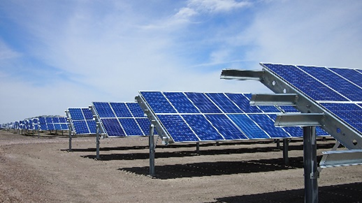Solar

Grid-connected solar systems
Solar panels that harness the sun’s power to generate electricity provide clean power for homes, communities and businesses, and help cut global carbon emissions.
Solar photovoltaic (pv) modules generate electricity from sunlight, which can be fed into the mains electricity supply of a building or sold to the public electricity grid. Reducing the need for fossil fuel generation, the growing grid-connected solar PV sector across the globe is helping create jobs, enabling families and businesses to save money, and cut greenhouse emissions.

How grid-connected PV systems are used
Major grid connected PV systems are installed on frames which are mounted on the suitable land. Ideally the PV faces towards the equator (i.e. South in the northern hemisphere) but the exact direction is not critical. However, it is important to make sure that there is minimal shading of the PV. The inverter is housed inside the building and connected to the mains electrical supply, usually with a meter to measure the kWh generated. The PV electricity production is exported to the grid.
Grid-connected systems do not usually include batteries for storage, because the mains grid can accept or provide power as needed. However, if rechargeable batteries are included, a grid-connected PV system can be used as a standalone ac supply in the event of a power cut, to allow essential loads to keep working.
